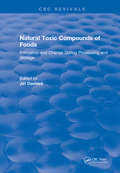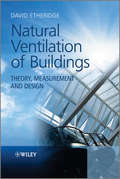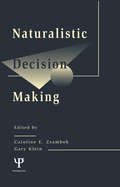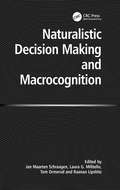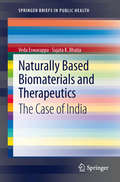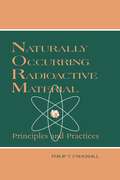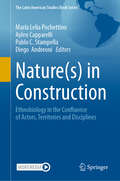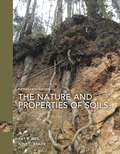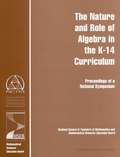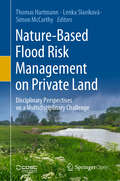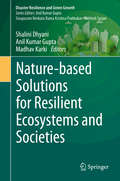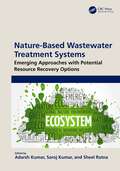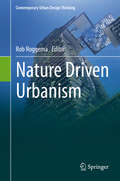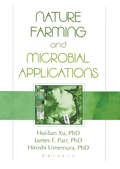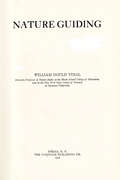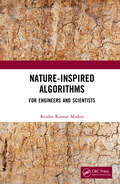- Table View
- List View
Natural Toxic Compounds of Foods
by Jiri DavidekThis book summarizes the knowledge of naturally occurring toxic and antinutritive food compounds. It includes those plants and animals of value or potential value for human nutrition, either by direct consumption or indirect. as feed for domestic animals. Also included are toxic and antinutritive compounds formed from food components during processing and storage, as well as the toxic and antinutritive compounds present as natural constituents in raw materials and foodstuffs. FEATURES: Discusses food intolerance-inducing compounds, toxins and toxic compounds; Focuses on the most frequently occurring intolerances; Describes the reaction conditions for the formation of these compounds, as well as for their degradation; Considers nitroso compounds and ethyl carbamate formation.
Natural Ventilation of Buildings
by David EtheridgeNatural ventilation is considered a prerequisite for sustainable buildings and is therefore in line with current trends in the construction industry. The design of naturally ventilated buildings is more difficult and carries greater risk than those that are mechanically ventilated. A successful result relies increasingly on a good understanding of the abilities and limitations of the theoretical and experimental procedures that are used for design.There are two ways to naturally ventilate a building: wind driven ventilation and stack ventilation. The majority of buildings employing natural ventilation rely primarily on wind driven ventilation, but the most efficient design should implement both types.Natural Ventilation of Buildings: Theory, Measurement and Design comprehensively explains the fundamentals of the theory and measurement of natural ventilation, as well as the current state of knowledge and how this can be applied to design. The book also describes the theoretical and experimental techniques to the practical problems faced by designers. Particular attention is given to the limitations of the various techniques and the associated uncertainties.Key features:Comprehensive coverage of the theory and measurement of natural ventilationDetailed coverage of the relevance and application of theoretical and experimental techniques to designHighlighting of the strengths and weaknesses of techniques and their errors and uncertaintiesComprehensive coverage of mathematical models, including CFDTwo chapters dedicated to design procedures and another devoted to the basic principles of fluid mechanics that are relevant to ventilationThis comprehensive account of the fundamentals for natural ventilation design will be invaluable to undergraduates and postgraduates who wish to gain an understanding of the topic for the purpose of research or design. The book should also provide a useful source of reference for more experienced industry practitioners.
Natural Wastewater Treatment Systems
by Ronald W. Crites E. Joe Middlebrooks Robert K. BastianCalling for ecologically and economically sound wastewater treatment systems, the authors of Natural Wastewater Treatment Systems explore the use of wetlands, sprinkler or deep irrigation, groundwater recharge, and other natural systems as sustainable methods for the treatment and management of wastewater. Based on work by prominent experts in natu
Naturalistic Decision Making (Expertise: Research and Applications Series)
by Caroline E. Zsambok Gary KleinIf you aren't using the term naturalistic decision making, or NDM, you soon will be. Even as a very young field, NDM has already had far-reaching applications in areas as diverse as management, aviation, health care, nuclear power, military command and control, corporate teamwork, and manufacturing. Put simply, NDM is the way people use their experience to make decisions in the context of a job or task. Of particular interest to NDM researchers are the effects of high-stake consequences, shifting goals, incomplete information, time pressure, uncertainty, and other conditions that are present in most of today's work places and that add to the complexity of decision making. Applications of NDM research findings target decision aids and training that help people in their decision-making processes. This book reports the findings of top NDM researchers, as well as many of their current applications. In addition, the book offers a historical perspective on the emergence of this new paradigm, describes recent theoretical and methodological advancements, and points to future developments. It was written for people interested in decision making research and applications relative to a diverse array of work settings and products such as human-computer interfaces, decision support systems, individual and team training, product designs, and organizational development and planning.
Naturalistic Decision Making and Macrocognition
by Jan Maarten SchraagenThis book presents the latest work in the area of naturalistic decision making (NDM) and its extension into the area of macrocognition. It contains 18 chapters relating research centered on the study of expertise in naturalistic settings, written by international experts in NDM and cognitive systems engineering. The objective of the book is to present the reader with exciting new developments in this field of research, which is characterized by its application-oriented focus. The work addresses only real-world problems and issues. For instance, how do multi-national teams collaborate effectively? How can surgeons best be supported by technology? How do detectives make sense of complex criminal cases? In all instances the studies have been carried out on experts within their respective domains. The traditional field of NDM is extended in this work by focusing on macrocognitive functions other than decision making, namely sense-making, coordination and planning. This has broadened the scope of the field. The book also contains a theoretical discussion of the macro-micro distinction. Naturalistic Decision Making and Macrocognition will be relevant to graduate students, researchers and professionals (including professionals and researchers in business, industry and government) who are interested in decision making, expertise, training methods and system design. The material may be used in two ways: theoretically, to advance understanding of the field of naturalistic decision making; and practically, to gain insight into how experts in various domains solve particular problems, understand and deal with issues and collaborate with others.
Naturally Based Biomaterials and Therapeutics
by Sujata K. Bhatia Veda EswarappaThis book advances biomedical innovations to address the plethora of health problems afflicting the developing world. A panoply of cultural, economic, infrastructural, and other factors prevent many interventions currently popular in the developed world from being similarly effective in the developing world. This book discusses less-traditional approaches, such as naturally based biomaterials and therapeutics, an area that has traditionally been overlooked but has also demonstrated impressive potential for health applications in recent years. This book explores precisely the kinds of applications which can enable countries like India to access more effective, inexpensive treatments while also taking more ownership of their healthcare technologies and innovations.
Naturally Occurring Radioactive Materials: Principles and Practices
by T.Rick IrvinManagement of Naturally Occurring Radioactive Materials - known in the industry as NORM -has become an important part of the regular training required for workers in oil and gas production, refinery and petrochemical manufacturing, and in certain types of mining. Proper handling of NORM-contaminated wastes and use of appropriate radiation detection and protective equipment are now understood to be important components of good worker safety programs. Until now, no practical, easy-to-read, book was available to supplement worker training courses on NORM management. Naturally Occurring Radioactive Materials: Principles and Practices fills this void by providing, in a single publication, an ideal reference for industry managers, supervisors and line personnel. The book stresses the proper handling and management of NORM contaminated wastes and provides a firm understanding of the chemical properties of radioactive agents, their toxicological effects, and the appropriate containerization and disposal methods for these materials.
Naturally Ventilated Buildings: Building for the senses, the economy and society
by Derek Clements-CroomeWhile there are many historical examples of successful naturally ventilated buildings, standards for indoor climate have tended to emphasise active, mechanical airflow systems rather than passive natural systems. Despite its importance, knowledge about the performance of naturally ventilated buildings has remained comparatively sparse. With ten key research papers this book seeks to address this lack of information.
Naturbanization: New identities and processes for rural-natural areas
by M. J. PradosAs the growth of the worlds population requires the continued search for residential space, the urbanization of natural lands is an inevitable process, but that process does not have to be one that is accomplished without regard for environmental quality. This book presents the unique perspective of naturbanization, the urbanization of protected a
Nature: Ethnobiology in the Confluence of Actors, Territories and Disciplines (The Latin American Studies Book Series)
by María Lelia Pochettino Aylen Capparelli Pablo C. Stampella Diego AndreoniThis book provides the state of the art of ethnobiology in Argentina and related Latin American countries, highlighting timely trends and topics. It synthesizes studies resulting from the III Jornadas Argentinas de Etnobiología y Sociedad (III JAES—3rd Argentinian Meeting of Ethnobiology and Society), convened in La Plata in 2021. As a relatively new academic development, ethnobiology integrates approaches from different points of view, such as biology, anthropology, geography, history, linguistics, and, in a crucial recent advance, local perspectives. Consequently, this volume contains 33 contributions from 86 authors of different countries, orientations, and disciplines—but all related to interrelationships between people/s and the natural environment. Chapters cover a diverse array of topics, ranging from biocultural relationships and their historical construction through time to conservation of biocultural and agrodiversity, ethnomycology, ethnophycology, and meliponiculture and beyond. The volume’s main goal is to propitiate the preservation of biocultural diversity through the application of ethnobiological wisdom in a global context characterized by the accelerated loss of traditional knowledge. The contributions aim to transcend the nature/culture dichotomy, emphasizing the inextricable relationship between communities and their environment and the importance of acting jointly in the construction of the inhabited landscape and local identity.
Nature and Empire in Ottoman Egypt
by Alan MikhailIn one of the first environmental histories of the Ottoman Empire, Alan Mikhail examines relations between the empire and its most lucrative province of Egypt. Based on both the local records of various towns and villages in rural Egypt and the imperial orders of the Ottoman state, this book charts how changes in the control of natural resources fundamentally altered the nature of Ottoman imperial sovereignty in Egypt and throughout the empire. In revealing how Egyptian peasants were able to use their knowledge and experience of local environments to force the hand of the imperial state, Nature and Empire in Ottoman Egypt tells a story of the connections of empire stretching from canals in the Egyptian countryside to the palace in Istanbul, from Anatolian forests to the shores of the Red Sea, and from a plague flea's bite to the fortunes of one of the most powerful states of the early modern world.
Nature and Empire in Ottoman Egypt: An Environmental History
by Alan MikhailIn one of the first environmental histories of the Ottoman Empire, Alan Mikhail examines relations between the empire and its most lucrative province of Egypt. Based on both the local records of various towns and villages in rural Egypt and the imperial orders of the Ottoman state, this book charts how changes in the control of natural resources fundamentally altered the nature of Ottoman imperial sovereignty in Egypt and throughout the empire. In revealing how Egyptian peasants were able to use their knowledge and experience of local environments to force the hand of the imperial state, Nature and Empire in Ottoman Egypt tells a story of the connections of empire stretching from canals in the Egyptian countryside to the palace in Istanbul, from Anatolian forests to the shores of the Red Sea, and from a plague flea's bite to the fortunes of one of the most powerful states of the early modern world.
The Nature and Properties of Soils
by Nyle Brady Ray Weil<p>This hallmark text introduces the exciting world of soils through clear writing, strong pedagogy, and an ecological approach that effectively explains the fundamentals of soil science. Worked calculations, vignettes, and current real-world applications prepare readers to understand concepts, solve problems, and think critically. Written for both majors and non-majors, this text highlights the many interactions between the soil and other components of forest, range, agricultural, wetland and constructed ecosystems. <p>Now in full-color, the Fifteenth Edition includes hundreds of compelling photos, figures, and diagrams to bring the exciting world of soils to life. Extensively revised, new and updated content appears in every chapter. Examples include: coverage of the pedosphere concept; new insights into humus and soil carbon accumulation; subaqueous soils, soil effects on human health; principles and practice of organic farming; urban and human engineered soils; new understandings of the nitrogen cycle; water-saving irrigation techniques; hydraulic redistribution, soil food-web ecology; disease suppressive soils; soil microbial genomics; soil interactions with global climate change; digital soil maps; and many others.</p>
The Nature and Role of Algebra in the K-14 Curriculum: Proceedings of a National Symposium May 27 and 28, 1997
by National Council of Teachers of MathematicsA report on The Nature and Role of Algebra in the K-14 Curriculum
Nature as Measure: The Selected Essays of Wes Jackson
by Wes JacksonIn 'Nature as Measure', a collection of Jackson's essays, the ideas of land conservation and education are written from the point of view of a man who has practiced what he's preached and proven that it is possible to partially restore much of the land that we've ravaged.
Nature-Based Flood Risk Management on Private Land: Disciplinary Perspectives on a Multidisciplinary Challenge
by Thomas Hartmann Lenka Slavíková Simon McCarthyThis open access book addresses the various disciplinary aspects of nature-based solutions in flood risk management on private land. In recent decades, water management has been moving towards nature-based solutions. These are assumed to be much more multi-purpose than traditional “grey infrastructures” and seem to be regarded as a panacea for many environmental issues. At the same time, such measures require more – and mostly privately owned – land and more diverse stakeholder involvement than traditional (grey) engineering approaches. They also present challenges related to different disciplines. Nature-based solutions for flood risk management not only require technical expertise, but also call for interdisciplinary insights from land-use planning, economics, property rights, sociology, landscape planning, ecology, hydrology, agriculture and other disciplines to address the challenges of implementing them. Ultimately, nature-based flood risk management is a multi-disciplinary endeavor. Featuring numerous case studies of nature-based flood risk management accompanied by commentaries, this book presents brief academic reflections from two different disciplinary perspectives that critically highlight which specific aspects are of significance, and as such, underscore the multi-disciplinary nature of the challenges faced.
Nature-based Solutions for Circular Management of Urban Water (Circular Economy and Sustainability)
by Alexandros Stefanakis Hasan Volkan Oral Cristina Calheiros Pedro CarvalhoDespite the strong economic growth of the last decades, our modern global society is facing the existential threat of climate change. It is now realized that the linear economic model is not sustainable in the long run and cannot sustain the life standards. The new circular economy approach that is already under discussion suggests the adjustment of our priorities and the re-orientation of the future infrastructure investments. In this context, we are looking for new, innovative and sustainable solutions to increase the resiliency of our societies, to protect and restore the ecosystems, and to maintain the necessary economic growth without further undermining the planet’s boundaries. The well-being of coming generations will depend on our ability to adapt our economies to this challenge. In particular, transforming today’s cities into sustainable cities is one of the main adaptations that will be necessary. A holistic approach looking at cities from a system’s perspective is neededto achieve this goal. Nature-based solutions (NbS) serve exactly this ambitious and multi-factorial purpose due to their inherent ability not only to tackle climate change but also to provide a series of ecosystem services and social benefits. In the urban context, NbS can deal with main challenges such as urban heat islands, flooding, treatment of wastewater and runoff and food provision. At the same time, NbS can provide a series of ecosystem services beneficial for the environment and the society including clean water production, nutrient recovery, heavy metals retention and a broad range of plant-based materials. In the new circular economy paradigm, NbS can contribute to strategies for climate change adaptation and create a holistic resource management system for the urban biosphere. Thus, this book aims at providing a single reference that discusses the role and effectiveness of NbS in the urban environment and how these systems can contribute to the circular management of water, nutrients and resources towards resilient, sustainable and healthy cities. The scope of the book extends to various fields and disciplines such as the built environment, urban water and wastewater, resource recovery, urban farming, smart sensing, research and development, technology and innovation, society and governance. Research studies, pilot projects, and case studies are part of the book.
Nature-Based Solutions for Flood Mitigation: Environmental and Socio-Economic Aspects (The Handbook of Environmental Chemistry #107)
by Carla S. S. Ferreira Zahra Kalantari Thomas Hartmann Paulo PereiraThis book provides an overview of the typical nature-based solutions (NBS) used for flood mitigation at different scales and in different areas (e.g. from catchment to hillslope scale; from urban to coastal areas). NBS can provide several ecosystem services, such as water regulation and water quality enhancement, and as such offer relevant technical solutions to complement typical grey infrastructures to mitigate flood hazard and water quality problems. In recent years, political awareness and interest from the scientific community have led to increasing implementation of NBS worldwide. In light of this trend, this book provides valuable insights into the environmental aspects of NBS, particularly their effectiveness for flood and pollution mitigation, and discusses socio-economic aspects related to the implementation of NBS, including regulatory aspects, cost, and citizens’ perceptions of NBS. Compiling the latest research, the book furthers our understanding of the role of NBS for flood mitigation and its relation to environmental aspects, to guide scientists and stakeholders in future NBS projects. It is intended for the scientific community and stakeholders, such as spatial planners and landscape managers.Chapter "Nature-based solutions for flood mitigation and resilience in urban areas" is available open access under a Creative Commons Attribution 4.0 International License via link.springer.com.
Nature-based Solutions for Resilient Ecosystems and Societies (Disaster Resilience and Green Growth)
by Shalini Dhyani Anil Kumar Gupta Madhav KarkiOver the past few decades, the frequency and severity of natural and human-induced disasters have increased across Asia. These disasters lead to substantial loss of life, livelihoods and community assets, which not only threatens the pace of socio-economic development, but also undo hard-earned gains. Extreme events and disasters such as floods, droughts, heat, fire, cyclones and tidal surges are known to be exacerbated by environmental changes including climate change, land-use changes and natural resource degradation. Increasing climate variability and multi-dimensional vulnerabilities have severely affected the social, ecological and economic capacities of the people in the region who are, economically speaking, those with the least capacity to adapt. Climatic and other environmental hazards and anthropogenic risks, coupled with weak and wavering capacities, severely impact the ecosystems and Nature’s Contributions to People (NCP) and, thereby, to human well-being. Long-term resilience building through disaster risk reduction and integrated adaptive climate planning, therefore, has become a key priority for scientists and policymakers alike. Nature-based Solutions (NbS) is a cost-effective approach that utilizes ecosystem and biodiversity services for disaster risk reduction and climate change adaptation, while also providing a range of co-benefits like sustainable livelihoods and food, water and energy security. This book discusses the concept of Nature-based Solutions (NbS) – both as a science and as art – and elaborates on how it can be applied to develop healthy and resilient ecosystems locally, nationally, regionally and globally. The book covers illustrative methods and tools adopted for applying NbS in different countries. The authors discuss NbS applications and challenges, research trends and future insights that have wider regional and global relevance. The aspects covered include: landscape restoration, ecosystem-based adaptation, ecosystem-based disaster risk reduction, ecological restoration, ecosystem-based protected areas management, green infrastructure development, nature-friendly infrastructure development in various ecosystem types, agro-climatic zones and watersheds. The book offers insights into understanding the sustainable development goals (SDGs) at the grass roots level and can help indigenous and local communities harness ecosystem services to help achieve them. It offers a unique, essential resource for researchers, students, corporations, administrators and policymakers working in the fields of the environment, geography, development, policy planning, the natural sciences, life sciences, agriculture, health, climate change and disaster studies.
Nature-Based Solutions in Achieving Sustainable Development Goals: Harmonizing Nature and Progress
by Pardeep Singh Prateek Srivastava Alexander SorokinThis book provides a comprehensive guide to leveraging nature-based economic initiatives for sustainable rural development. The book covers a wide range of topics, including promoting agroecology and sustainable fisheries for achieving food security, ecosystem-based approaches for water resource management, nature-driven renewable energy systems, and nature-based urban resilience. The book also explores the impact of nature-based interventions on ecosystems and human health, augmenting carbon sink capacities, ecological conservation and sustainable management of marine environments, ecosystem restoration and biodiversity conservation for land stewardship, and promoting multi-stakeholder collaboration for nature-based sustainable development. The book presents a didactic approach, with illustrations, tables, and a new form of presentation that makes it easy to understand and apply the concepts. The methods, results, and topics covered in the book will be of particular interest to readers interested in sustainable development, environmental conservation, and rural development. The book provides readers with a deep understanding of nature-based solutions and their potential to address societal challenges through the protection, sustainable management, and restoration of both natural and modified ecosystems. The main benefit that readers will derive from the book is a comprehensive understanding of nature-based solutions and their potential to address major challenges like climate change, disaster risk reduction, food and water security, biodiversity loss, and human health. The book provides readers with practical solutions to leverage nature-based economic initiatives for sustainable rural development. The book is an essential resource for policymakers, researchers, practitioners, and students interested in sustainable development, environmental conservation, and rural development.
Nature-Based Wastewater Treatment Systems: Emerging Approaches with Potential Resource Recovery Options
by Adarsh Kumar Saroj Kumar Sheel RatnaGiving an account of successfully applied and recently developed green remediation technologies for water pollution control, this book describes the scope and applications of nature-based wastewater treatment technologies for environmental sustainability. The major focus is on associated eco-environmental concerns, recent technological developments, field studies, lessons learned, sustainability concerns, and future challenges. It also deals with the development of valuable bioresources together with wastewater treatment for the circular economy.This book: Covers nature-based wastewater treatment systems for the efficient management of wastewater for the protection of precious water resources. Includes development and utilization of useful bioresources, bioenergy, and value-added products together with wastewater treatment for the circular economy. Discusses technological aspects such as design, operation, and maintenance, eco-friendliness, effectiveness, and sustainability concerns. Highlights technological advancements, field experiences, research gaps, recent developments, challenges, and future directions for further improvements. Reviews field studies and challenges between pollution sources, exposure pathways, and impacts on environmental quality and human health. This book is aimed at graduate students and researchers in environmental engineering and sciences, environmental microbiology, and biotechnology.
Nature Driven Urbanism (Contemporary Urban Design Thinking)
by Rob RoggemaThis book discusses the way that a nature-driven approach to urbanism can be applied at each of the urban scales; architectural design, urban design of neighborhoods, city planning and landscape architecture, and at the city and regional scales. At all levels nature-driven approaches to design and planning add to the quality of the built structure and furthermore to the quality of life experienced by people living in these environments. To include nature and greening to built structures is a good starting point and can add much value. The chapter authors have fiducia in giving nature a fundamental role as an integrated network in city design, or to make nature the entrance point of the design process, and base the design on the needs and qualities of nature itself. The highest existence of nature is a permanent ecosystem which endures stressors and circumstances for a prolonged period. In an urban context this is not always possible and temporality is an interesting concept explored when nature is not a permanent feature. The ecological contribution to the environment, and indirect dispersion of species, from a temporary location will, overall add biodiversity to the entire system.
Nature Farming and Microbial Applications
by Hiu-lian Xu Hiroshi Umemura James F. Parr JrProduce more abundant, high-quality crops with the information you'll find in this book!Recent concerns over environmental pollution and food quality degradation caused by the excessive use of chemicals have prompted scientists and policymakers to re-evaluate modern agricultural processes and search for alternatives that will aid in the production of healthy foods and the protection of our environment. Nature Farming and Microbial Applications summarizes current research in the field, highlighting unique practices such as the use of microbial inoculants and various alternatives to chemical fertilizers and pesticides. The principles of nature farming, as set forth by Japanese philosopher Mokichi Okada, must fulfill these requirements: producing safe and nutritious food that promotes good health providing economic and spiritual benefits to both producers and consumers being sustainable and easily practiced conserving and protecting the environment producing sufficient high-quality food for an expanding world populationTo this end, Nature Farming and Microbial Applications addresses issues of concern to organic farmers, including: soil fertility pest control effective microorganisms photosynthesis transpiration plant-water relations stress resistance of growing cropsThis well-referenced volume contains unique and original methods of modeling and analysis. It will be used again and again as a reference source for students and researchers.
Nature Guiding
by William Gould VinalNature Guiding is the science of inculcating nature enthusiasm, nature principles, and nature facts into the spirit of individuals. "Doing" nature-study means observing, wondering, and solving problems. It could include collecting, building, measuring, painting, planning, writing, touching, experimenting or any of a wide range of other activities. Most importantly, it allows children to be "original investigators."This book is intended as a resource for teachers and students engaged in nature study at summer camps and in schools. William Gould Vinal believed that the teacher of nature study should be "in sympathy with the simple life and the country way," that the nature study should emphasize observation of the interactions of plants and animals in their environment, and not be reduced to matters of taxonomy and anatomy. In Nature Guiding, he offers advice to camp counselors and school teachers on incorporating nature study into everyday activities, as well as suggestions for parents and others about using visits to state and national parks to teach nature lore.
Nature-Inspired Algorithms: For Engineers and Scientists
by Krishn Kumar MishraThis comprehensive reference text discusses nature inspired algorithms and their applications. It presents the methodology to write new algorithms with the help of MATLAB programs and instructions for better understanding of concepts. It covers well-known algorithms including evolutionary algorithms, genetic algorithm, particle Swarm optimization and differential evolution, and recent approached including gray wolf optimization. A separate chapter discusses test case generation using techniques such as particle swarm optimization, genetic algorithm, and differential evolution algorithm. The book- Discusses in detail various nature inspired algorithms and their applications Provides MATLAB programs for the corresponding algorithm Presents methodology to write new algorithms Examines well-known algorithms like the genetic algorithm, particle swarm optimization and differential evolution, and recent approaches like gray wolf optimization. Provides conceptual linking of algorithms with theoretical concepts The text will be useful for graduate students in the field of electrical engineering, electronics engineering, computer science and engineering. Discussing nature inspired algorithms and their applications in a single volume, this text will be useful as a reference text for graduate students in the field of electrical engineering, electronics engineering, computer science and engineering. It discusses important algorithms including deterministic algorithms, randomized algorithms, evolutionary algorithms, particle swarm optimization, big bang big crunch (BB-BC) algorithm, genetic algorithm and grey wolf optimization algorithm. "
